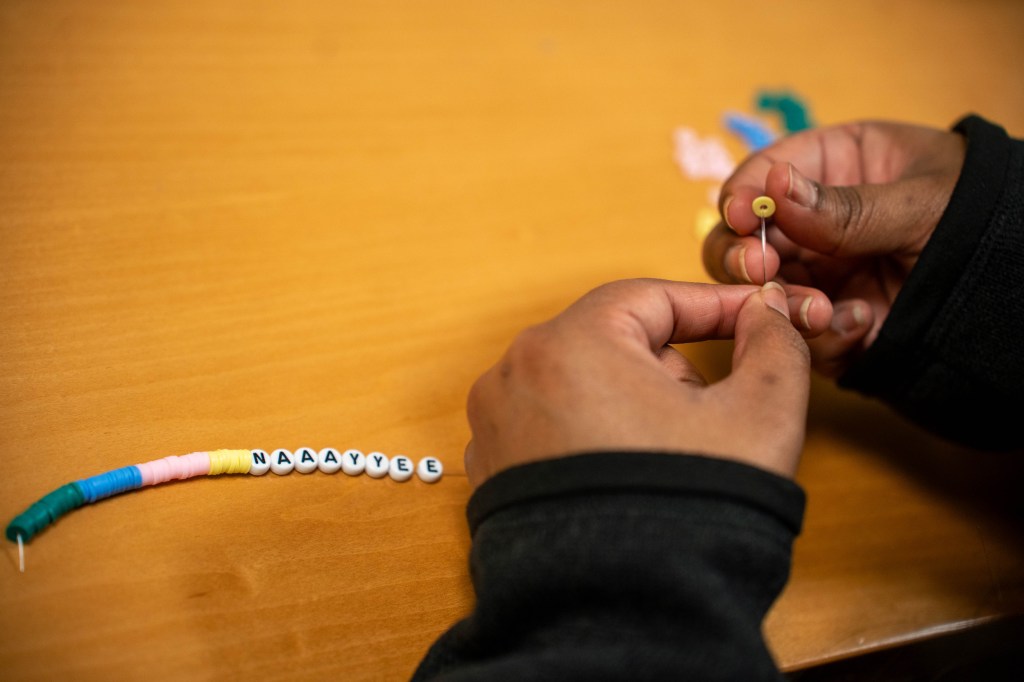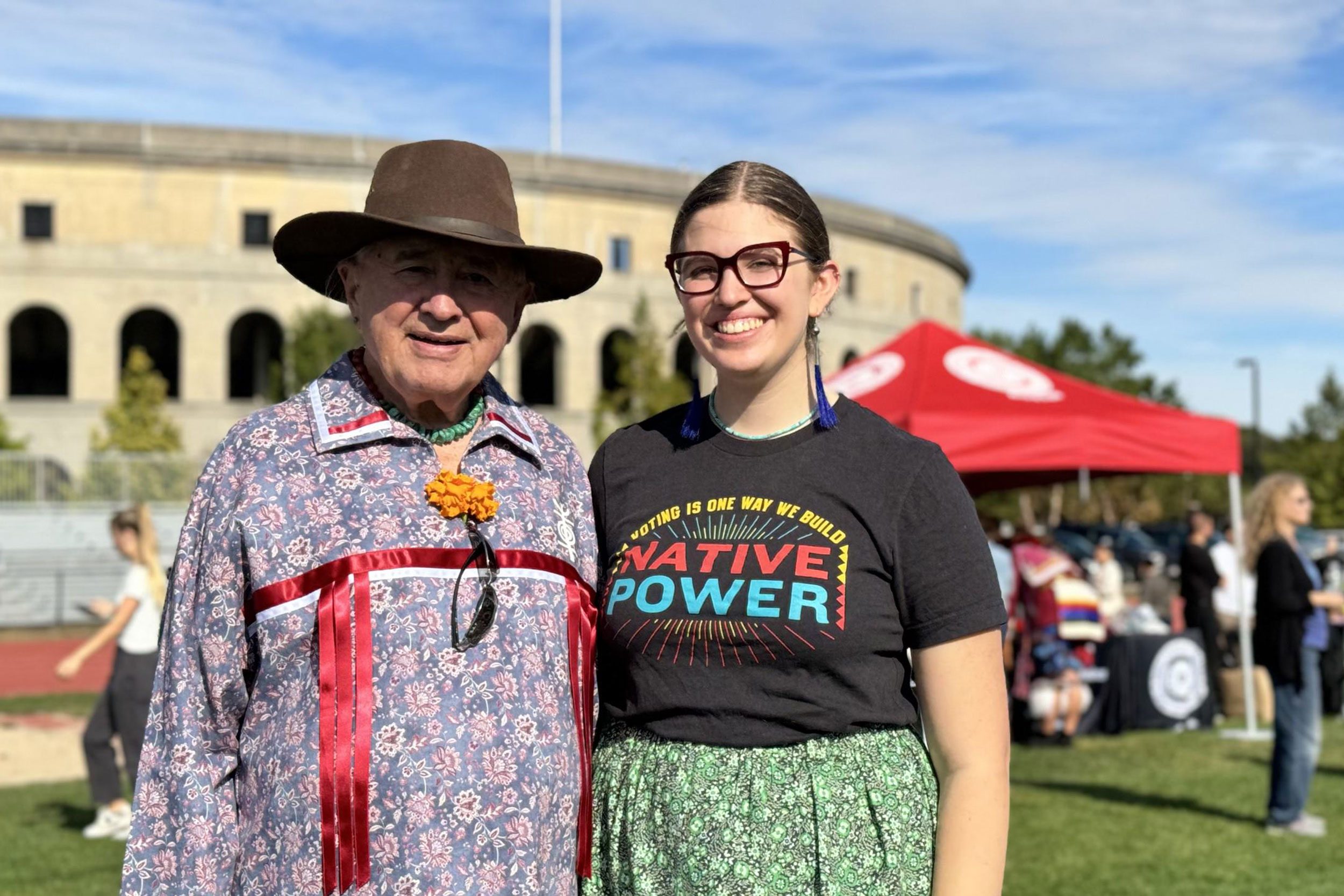The 26th annual Harvard Powwow was a family affair for renowned American Indian scholar Tink Tinker of Osage County and his great-niece Lena Tinker ’25, Osage Nation.
“I so appreciate Lena. I’ve watched her grow up,” he said. “We knew when you were little that you were smart. Now you’re almost a Harvard graduate.”
Lena smiled as she remembered her uncle supporting her decision to come to Harvard. “Now getting to have him here my senior year is very special,” she said. “It’s good to have family here.”
Despite the generational differences, the Tinkers were happy to connect with other Natives at the Sept. 28 gathering. “I like the element of thinking back on the powwow history that we have in this country as this place where we come together to gather in community,” Lena said about this year’s theme, “In My Powwow Era.”
Lena Tinker ’25 makes a ribbon skirt for the powwow.
Stephanie Mitchell/Harvard Staff Photographer
Tink, a professor emeritus at Iliff School of Theology, attended the powwow ahead of the first of four trips to campus as visiting Indigenous Spiritual Leader. The four-week residency, part of a collaboration between the Memorial Church and the Harvard University Native American Program (HUNAP), will see Tink working with students, collaborating with faculty and staff, and publicly presenting his work.
“It feels good,” he said of the powwow. “It feels like Indian Country. For me, coming from Denver and being Osage from Oklahoma, I’m hooking up with relatives here. I can hear their voices at the microphone and in the songs. I can see them in their dance steps.”
Following in her great uncle’s service-driven footsteps, Lena has been an active member of the Native community on campus. As a first-year, she joined Natives at Harvard College (NaHC) and now serves as co-president of the student group.
“My first memory of meeting Native people on campus was on the steps of Widener Library on a beautiful, sunny day,” she said. “I remember that first year wondering what the Native community was like here and slowly getting to meet everyone over the course of my four years here.

HUNAP hosted a community building event that included a friendship bracelet-making session.
Photo by Jodi Hilton
“For a lot of us, NaHC is home on this campus and those people are like family. It’s a space that feels special and different from anywhere else at the University,” she added.
While reflecting on their favorite memories of the student group, Lena and classmates brought up those who had graduated, affectionally called their NaHC elders. “We hold that memory in the stories we share with each other on campus,” she said.
Karen Medina-Perez ’24, who has ancestral connections to the Lambayeque and Caxamarca region in the Andes and Afro-Indigenous ancestry from Aroa, Yaracuy, is one such NaHC elder who returned for the powwow to reconnect with old friends and “celebrate our existence.”
In the days leading up to the powwow, HUNAP hosted several community-building events. Students gathered to work on regalia, specifically ribbon shirts and skirts, friendship bracelets, and even took lessons on social dancing from Kabl Wilkerson of the Citizen Potawatomi Nation, a doctoral candidate in the History Department.
For the elder Tinker, the power of powwows is their ability to bridge the gap among generations of Native people. “That’s the Indian world,” he said. “Far back as I can remember, the social event meant all generations were present, from the littlest to the oldest, and especially the in-betweens.”
“Harvard Powwow is a moment for our community to come together and celebrate,” said Jordan Clark of the Wampanoag Tribe of Aquinnah, acting executive director of HUNAP. “When we think of community that word is all-encompassing. It spans the University, the region, and generations.”
Source link

